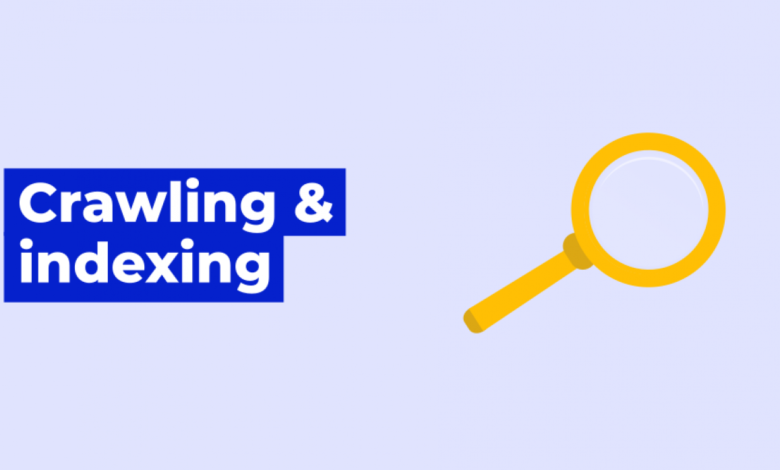The Difference Between Crawling and Indexing in SEO

If you’re new to the SEO sector, you might have heard of the terms “crawling” and “indexing” commonly employed.
If you think they’re foreign terms and you’re unable to know the meaning behind them Don’t fret. In the current complexities of our digital world, it’s difficult to keep all the things going behind the scenes. But, they’re more complicated than it seems Our team of experts is there to assist.
In this piece, we’ll define the two terms and explain what they mean in the framework of SEO (search engine optimization). We’ll also address this question “What is the difference between crawling and indexing in SEO”? Let’s get started!
What is “Crawling” Mean?
In the sense of SEO”crawling” is a term used in SEO “Crawling” refers to the method by which search engine bots systematically browse and access websites across the web. They are often known as “spiders,” which is the source of the phrase “crawlers” and “crawling” is derived from. The crawler bots track links from one page to the next and collect information on each page’s structure and content.
Crawling is an important component of SEO which permits Google (and the other engines) to search for the index and rank websites. Google crawlers look at the contents and hyperlinks within websites to determine the relevancy and credibility of the information. When they’ve crawled the site and gathered this data The algorithm used by the search engine evaluates the content according to their criteria.
What is “Indexing” Mean?
Indexing refers to organizing and storing websites that robots from search engines have visited. When a crawler visits pages, the information obtained is added to a search engine’s index. The index is a huge database containing information on millions of websites’ content and features.
Indexing is an important element in displaying high-quality information to their users. It permits search engines to show relevant websites in response to queries. Search engines use individual indexing of pages to examine the website’s metadata tags, description, and content. The best way to earn more revenues and lead to increased organic traffic. Discovering specific keywords in the content increases the chance that the site will rank for that keyword.
What is the Crawling and Indexing in SEO?
“Crawling” refers to how search engine bots routinely go through websites. “Indexing” refers to search engines that store and organize webpages that already have been indexed.
Crawling is the precursor to indexing because search engine bots need to be able to crawl websites to collect data before it is indexable and accessible to the results of search engines. Both processes are interconnected, as search engines sort through databases of all the information available online.
Within the SEO community, the terms “crawling” and indexing are frequently utilized as interchangeable terms. For instance, a customer might ask, “Has the site been crawled yet?” or “Does this page need to be indexed?” This isn’t an issue, since indexing and crawling in SEO are linked. But as an SEO specialist and a web designer, it’s important to be aware of the differences between these two terms.
How To Check If a Site is Being Crawled and Indexed
ensuring that your pages are crawled and indexed is crucial for your website pages to get a high ranking on Google. To verify this, employ a variety of tested methods. You can try testing yourself using Google Search or use Google Search Console. In the next section, we’ll explain how to do this and the advantages of both.
The Manual Check (Input “Site:” Before URL)
The simplest and most efficient method to verify if a page is crawled or indexed is to do an examination manually. Take these steps:
- Check out the site you’d like to visit.
- In your URL search bar, Double-click to highlight the entire URL.
- Before the http or the https Enter “Site:” and hit Enter.
- If you locate the page, click on the three dots in the middle of the URL, and then over the hyperlink (title tag).
- Three dots on the screen indicate the time when the page was crawled and then indexed.
Verify using Google’s Search Console
The other method you and your company should test is the Google Search Console tool. Search Console provides a lot of information and data that can be utilized in different ways. It is a quick way to determine if an internet website has been crawled and indexed, as well as many other useful tools. Additionally, you can utilize Google Search Console to prompt Google to crawl and index specific websites.
If the page hasn’t yet been indexed, crawled, or indexed you can submit a request using “Request Indexing.” You can request indexing at any time when the page has been indexed, but it was recently changed.
The Importance of SEO Crawling and Indexing Your Site
To improve the visibility of your website SEO is the process by which search engines search and crawl your website. It’s among the most essential steps of an SEO process. When Google (and other crawlers of search engines) do not know that the site exists, it will not be ranked in the top position of the search results. Luckily, Google has systems to crawl and index web pages. But, determining if the search engines are crawling your site regularly is an excellent idea.
Since the search engines crawl your site and index your site, it helps you be at the top of results for search engines. A well-designed SEO method will aid in helping your site rank higher in search engines, thereby increasing the visibility of your website online. When more potential customers discover your site via keywords the higher visitors and sales your company earns.
Improve SEO Strategy: Partner With Boostability
As the number one SEO partner program globally Our team is dedicated to helping small businesses thrive on the internet. Our team of experts is focused on analyzing trends and the best practices within the world of search engine marketing. If you’re a company looking to improve your product range, work with us now! We’ll assist you in selling and servicing it, and you receive the credit.
Contact us today to find out more about the ways that our white-label SEO company in Canada solutions can benefit your business!
What exactly are Crawling and Indexing?
Searching for content: Google downloads text, videos, and images from webpages it discovers online using crawlers, which are automated programs. Searching for information: Google analyses the content videos, images, and text pages, and saves the information to the Google index which is a massive database.
How long will it take for a website to be crawled?
Crawling can last from a few days up to several weeks. Be patient and track the progress of your crawl using index status reports the Index Status report or the URL Inspection tool. The request for a crawl doesn’t ensure that the crawl will be included in the search results will be instantaneous or even in any way.
Are web crawlers the same as search engines?
Search engines utilize the web crawlers they own and open websites. All search engine crawlers that are commercial begin their crawling process by downloading the robots. The text file has rules on the pages that search engines can or shouldn’t crawl on the site.
Is it a crawler based on a search engine?
To provide Instant answers to specific questions, DuckDuckGo leverages many sources including specialized sources like Sportradar and crowd-sourced websites like Wikipedia. We also have an in-house crawler (DuckDuckBot) and several indexes to back our results.



